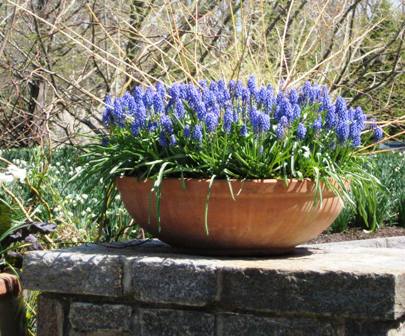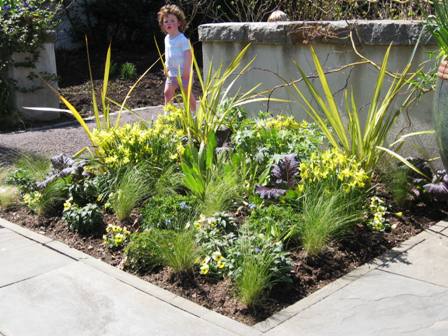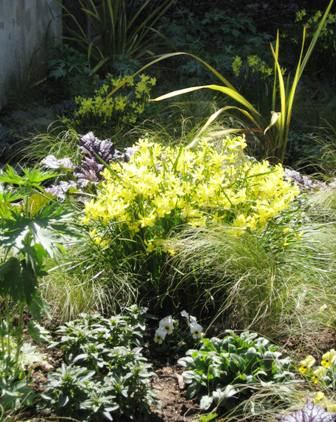I promised myself this year that I would run over to Chanticleer once a week to maintain a record of what is in bloom. As I sprinted through the garden last week on a beautiful spring day, I was blown away by the magnificent spring plantings. After scanning through the photos at home, what struck me was how the same specimens were used in abundance and with repetition in containers and garden beds. In the photo above, a group of containers is filled with grape hyacinths and a few selections of narcissus as its centerpiece, with other plantings acting as its supporting cast. In the photo below, near the entryway of the garden, is a solo, low rising container of blue grape hyacinths.
The next 3 photos are examples of the repeated use of a yellow narcissus coupled with a small tufted grass and in two of the photos, a variegated phormium. Repetition, repetition and selected use of flowers makes for a strong statement.
In my own garden, I have kept my early spring plantings simple and plentiful with a slew of red tulips, along with some orange ones juxtapositioned against the buds of Cotinus coggyria ‘Royal Purple’ and a barberry bush.
I hope these photos evoke a sense that successful flower or plant vignettes need not consist of a sophisticated, complex design with a plethora of intricate plant material in order to be immensely satisfying to the eye.
I liken it to the renowned concert pianist, Vladimir Horowitz, who in his old age reverted to playing much of his repertoire with the lightness and playfulness of a child, coupled with all of the years of experimenting, practicing and performing in a variety of styles and moods. So, too in the garden. We experiment, we ruminate, we create: often returning in our more seasoned years to designing vignettes which are abundant in plant material but minimalistic in the selection of plants. Some of the most powerful of all gardens are elegant, breathtaking and simple!





